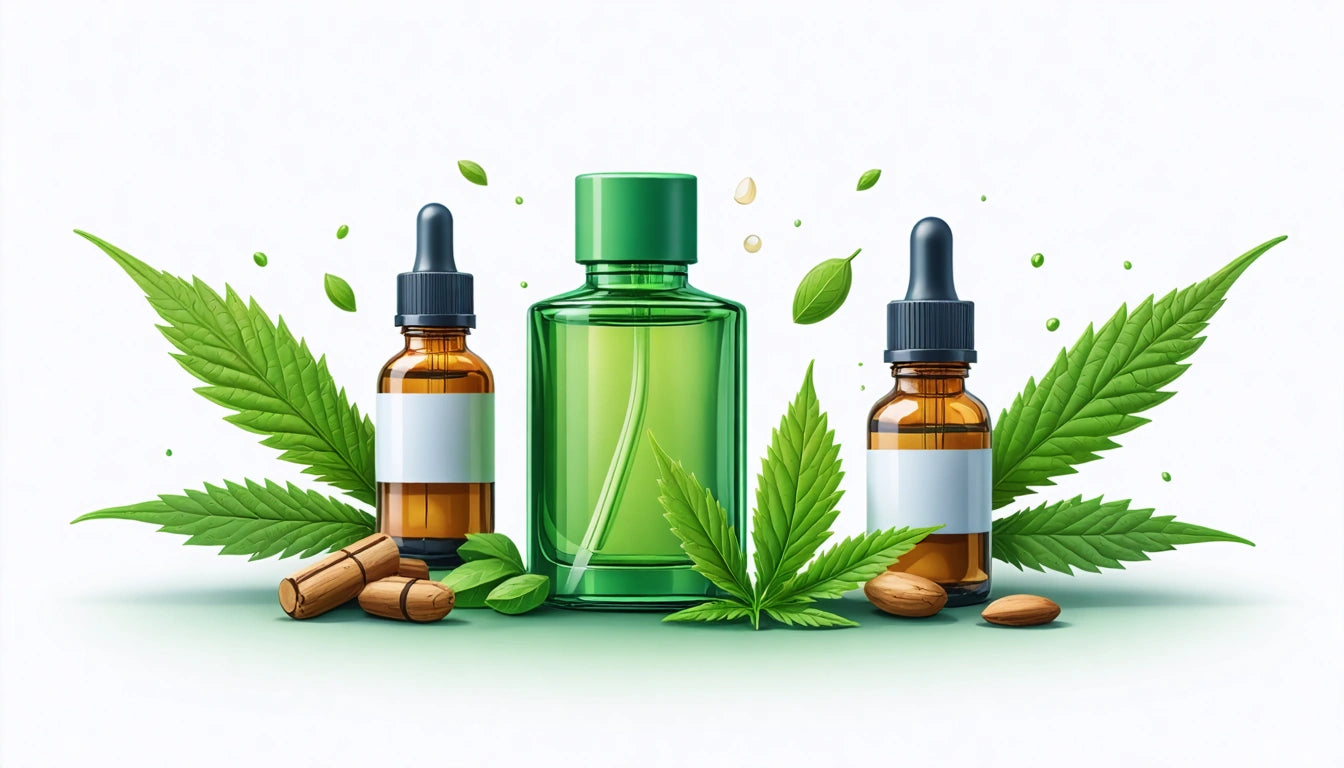Table of Contents
Understanding Marijuana: Origins, Composition, and Effects
Marijuana, also known as cannabis, has been used by humans for thousands of years for medicinal, spiritual, and recreational purposes. Despite its long history, there remains considerable confusion about what marijuana is, how it affects the body, and why it carries various nicknames like "pot" and "weed." This comprehensive guide explores the plant's composition, effects, terminology, and cultural significance.
What Is Marijuana: Plant Basics and Composition
Marijuana refers to the dried flowers, leaves, stems, and seeds of the Cannabis sativa or Cannabis indica plant. These plants contain more than 500 chemical compounds, including over 100 cannabinoids, with the most well-known being tetrahydrocannabinol (THC) and cannabidiol (CBD).
According to this resource on cannabis plant basics, the marijuana plant typically grows between 3-15 feet tall with serrated leaves arranged in a palm-like pattern. The plant's flowers, particularly from female plants, contain the highest concentration of cannabinoids.
What Is Marijuana Made Of?
The primary components of marijuana include:
- Cannabinoids (THC, CBD, CBN, etc.)
- Terpenes (aromatic compounds)
- Flavonoids (plant pigments with antioxidant properties)
- Plant material (cellulose, chlorophyll)
These components work together in what scientists call the "entourage effect," suggesting that the compounds in cannabis work synergistically to produce effects different from any single compound alone.
Marijuana Terminology: Why Is It Called Pot and Weed?
Cannabis has acquired numerous nicknames throughout its history, with "pot" and "weed" being among the most common in North America.
Why Is Marijuana Called Pot?
The term "pot" likely derives from the Spanish word "potiguaya" or "potación de guaya," referring to an alcoholic drink made by steeping cannabis leaves in wine or brandy. This terminology emerged in the 1930s and 1940s and became popularized during the counterculture movement of the 1960s.
Why Is Marijuana Called Weed?
The nickname "weed" references the plant's ability to grow virtually anywhere with minimal care, similar to unwanted garden weeds. This term became popular in the 1980s and 1990s and remains common in contemporary cannabis culture.
Cannabis terminology has evolved significantly over time, reflecting changing cultural attitudes and legal status.
What Does Marijuana Do: Effects on Body and Mind
Marijuana interacts with the body's endocannabinoid system, a complex cell-signaling system that plays a role in regulating various functions and processes. When consumed, cannabinoids bind to receptors in this system, producing a range of effects.
Physical Effects
- Increased heart rate
- Bloodshot eyes
- Dry mouth ("cotton mouth")
- Increased appetite ("the munchies")
- Relaxed muscles
- Potential pain relief
Mental Effects
- Altered perception of time
- Euphoria or elevated mood
- Relaxation or anxiety (depending on the individual and strain)
- Impaired short-term memory
- Enhanced sensory experiences
As this detailed resource explains, marijuana's effects can vary significantly based on the strain, consumption method, dosage, and individual factors like tolerance and metabolism.
Recreational vs Medical Marijuana: Key Differences
While recreational and medical marijuana come from the same plant species, they differ in their intended use, regulation, and sometimes in their composition.
What Is Recreational Marijuana?
Recreational marijuana refers to cannabis used without medical justification, primarily for enjoyment. In states where it's legal, adults can purchase recreational marijuana from licensed dispensaries without a doctor's recommendation.
Medical Marijuana
Medical marijuana is prescribed by healthcare providers to treat specific conditions. It often emphasizes specific cannabinoid profiles tailored to particular symptoms or conditions. Medical marijuana applications include treatment for chronic pain, nausea from chemotherapy, muscle spasms from multiple sclerosis, and seizure disorders.
Marijuana Classification and Chemical Components
From a legal perspective, marijuana is classified as a Schedule I controlled substance at the federal level in the United States, though many states have enacted contradictory legislation.
What Type of Drug Is Marijuana?
Marijuana is typically classified as a psychoactive drug with depressant, stimulant, and hallucinogenic properties. This complex classification stems from the varied effects different strains can produce. This resource explores the nuances of marijuana's drug classification in detail.
What Is Marijuana Metabolite?
When THC enters the body, it breaks down into molecules called metabolites. The primary metabolite, THC-COOH (11-nor-9-carboxy-THC), is what most drug tests detect. This metabolite can remain in the system long after the psychoactive effects have worn off, sometimes for weeks in regular users.
Cultural Significance and Cannabis Holidays
Cannabis has developed its own subculture with specific holidays and celebrations. The most famous is April 20 (4/20), widely recognized as a day to celebrate marijuana culture. The origin of this tradition reportedly traces back to a group of high school students in the 1970s who would meet at 4:20 pm to search for a rumored abandoned cannabis crop.
What Is Marijuana Holiday?
Beyond 4/20, other cannabis-related observances include 7/10 (which reads as "OIL" upside down, celebrating cannabis concentrates) and "Green Wednesday" (the day before Thanksgiving, which has become one of the highest-grossing days for legal cannabis sales).
These cultural touchpoints reflect marijuana's journey from counterculture to mainstream acceptance in many parts of the world. As this analysis of cannabis cultural evolution shows, attitudes continue to shift as research expands and legal frameworks evolve.
Understanding marijuana's composition, effects, and cultural context provides a foundation for informed discussions about its benefits, risks, and appropriate regulation in society. Whether for medical treatment or recreational enjoyment, knowledge about what marijuana is and how it works remains essential for responsible use.











Leave a comment
All comments are moderated before being published.
This site is protected by hCaptcha and the hCaptcha Privacy Policy and Terms of Service apply.